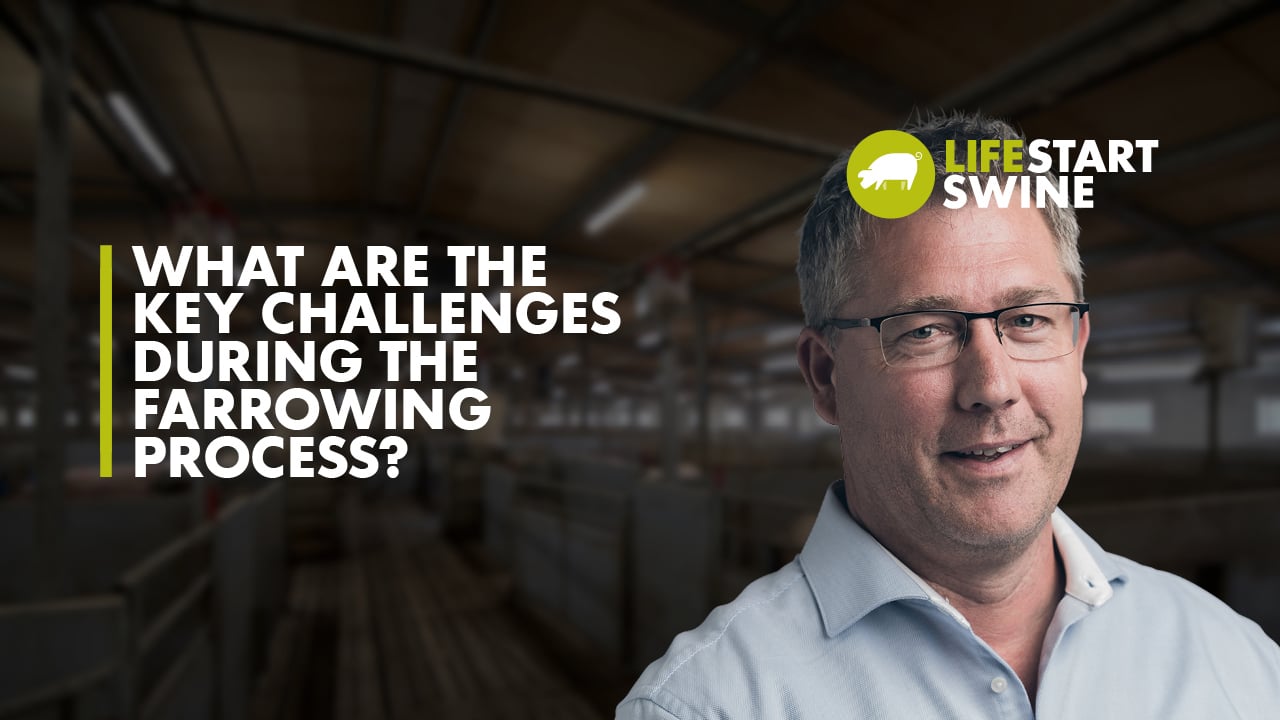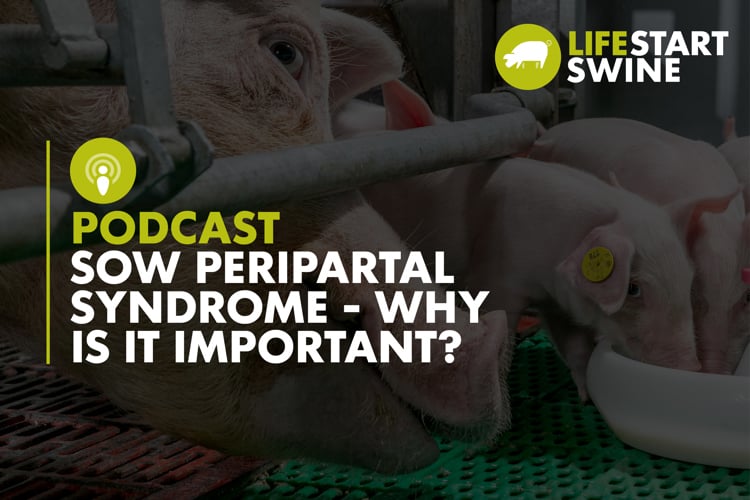
- 2023
- GESTATION
Pieter Langendijk, senior research scientist with Trouw Nutrition, speaks to LifeStart Swine about how producers continue to struggle with sows that are having farrowing issues with today’s large litters. Langendijk has worked for Trouw Nutrition for seven years focusing on sow R&D, specifically looking at how nutrition can improve sow performance.

What are the key challenges during the farrowing process?
“Some genetics today may farrow up to 18 to 20 piglets. If you go back 20 years, sows would farrow about 10 to 12 piglets. We've seen a tremendous increase in litter size during that time,” said Dr. Langendijk. “Back then, sows would take two or three hours to farrow those 12 piglets, whereas now sows may need six to eight hours to farrow a litter of 18 to 20 piglets. Time is everything when it comes to successful farrowing.”
When giving birth to piglets, a sow’s uterus will contract. These contractions serve to push the piglets from the uterine horns, where they are situated during pregnancy, out through the cervix. Pushing out 18 to 20 piglets simply takes more time.
“The first eight to 12 piglets will have exactly the same experience as 8 to 12 piglets in a litter born 20 years ago. But the piglets that are born after number 12 will have a different experience,” he explained. “Piglets born later in the litter will experience many more contractions. Contractions are okay to push out piglets, but at the same time, they compress the placenta that's delivering blood and oxygen to the piglet. So later piglets will experience a lot of those contractions throughout the process of farrowing.”
Every time a contraction passes the uterine horn at the spot where a piglet is situated, blood flow and oxygen supply to the piglet will be compromised for a certain amount of time. Thus, if the process takes six to eight hours rather than two or three hours, there are going to be effects on the piglets in terms of oxygen deficiency.
“Ultimately, this will compromise the viability of piglets when they are born and can also end up in a piglet being stillborn,” he said. “The total amount of time really is the issue when it comes to farrowing these large litters.”
When to intervene in farrowing?
“Again, time is everything. If you look at a typical farrowing protocol, after a certain amount of time between two piglets a farm employee would intervene either by sleeving or palpating the sow to see if the piglet is being obstructed or anything like that, and normally protocols will suggest that after a gap of about 20 to 30 minutes between two piglets, you need to start worrying about that next piglet,” he said.
Dr. Langendijk and his team have studied a large data set to analyze whether this is really the case.
“In fact, if you look at the interval between two piglets, it doesn't say much about the risk of the next piglet being born dead or being compromised - whether it's 30 minutes between two piglets or 60, or even 60 to 90 minutes,” Dr. Langendijk explained.
His data analysis showed that the individual gap between piglets didn't make much difference in terms of percent of piglets stillborn except for more than 90 minutes between two piglets. That's when there was an increase in risk for stillborn births, but the extended gap only affected a very small percentage of all piglets.
“Cumulative birthing time that a sow farrowed was a bigger risk of piglets being stillborn,” he said. “If a piglet is born within the first two hours of the farrowing process, the risk is relatively low. However, every hour that's added to the farrowing process increases the risk for piglets to be stillborn. This makes sense because it also explains why the sow that is farrowing for six to eight hours has more stillborn piglets than one that's farrowing for two to three hours.”
Thus, cumulative birthing time affects when producers should intervene in the farrowing process. Dr. Langendijk recommends if a sow has been farrowing for:
• Two or three hours: don’t intervene unless there are obvious signs of discomfort or distress.
• Three to four hours: start to consider intervening when there is a long interval of more than an hour between two piglets.
• Five or six hours: the interval may become a bit more critical. Consider intervening within 45 minutes from the previous piglet.
“It's really about being patient,” he said. “I say all the time, you shouldn't necessarily intervene in farrowing. When a sow is farrowing for more than four hours, you should start to consider it and look at other signs of distress, etc. It's all about patience and looking at the total farrowing time, so you need to record the time that the sow has been farrowing and monitor.”
Tip for farrowing hyper-prolific sows
Avoid using too much palpation. It feels contra-intuitive - people want to do something to help the sow along, but sometimes it's better to refrain than to jump in. Palpating itself is a form of stress to the sow. This stress may inhibit or reduce oxytocin release in the sow. Oxytocin is responsible for uterine contractions. Thus, palpation may inhibit that process.
Oxytocin to speed up process. When a sow needs intervention and it’s been established that the sow may have weak contractions, inject oxytocin to strengthen contractions and speed up the farrowing process and to optimize the viability of the piglet. However, if you use oxytocin, don't use too much. The maximum dose is 5 to 10 international units. Going above that level may result in more stillborn piglets.
Dry and warm newborns. As you monitor piglet births, dry piglets and place them under heat lamps which will increase their survival rate.
Record farrowing time of the first four to five piglets. In general, the time to farrow the first piglets is predictive of the total time. If you know the first four piglets are taking longer than usual, then the sow will likely need longer to farrow the full litter. A higher recorded time can also serve as a predictor of whether a sow may need more attention than other sows in the farrowing room.



